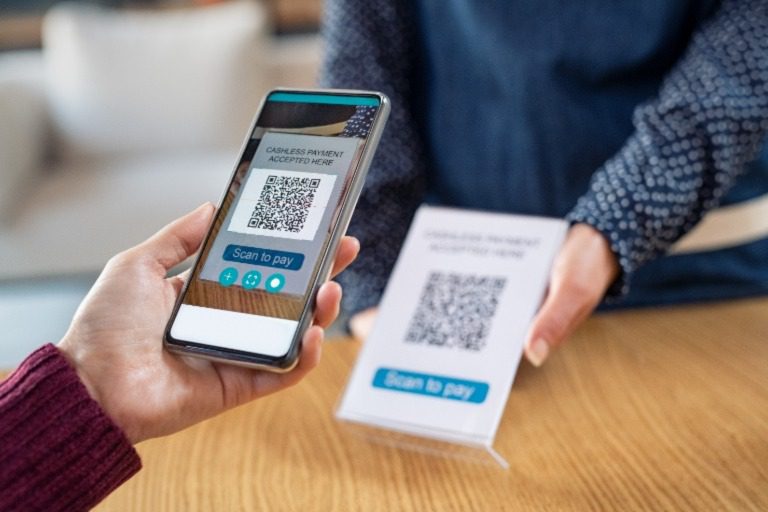Creative technology and consumer needs have had a significant effect on today’s marketplace. As a result, QR codes have proven to be a powerful tool providing quick contactless solutions for a variety of purposes for merchants.
Though QR codes had a slow start, their integration into various industries gave them an adaptive answer to foster growth. Even during challenging times.
This article examines the past and recent use of QR codes, their flexibility and importance in contactless payment in present-day businesses.
What is a QR Code?
A quick response (QR) code is a quirky square matrix “barcode” that when scanned with technology on today’s smartphones, will take a user directly to the specific information for each unique QR code such as a menu, payment screen, or a webpage.
Unlike barcodes that reveal information only when scanned vertically, QR codes operate at an extremely high speed and can be scanned vertically or horizontally, and hold hundreds of times more information.
The Evolution of the QR Code
QR codes were first developed in 1994 in a Japanese automobile factory for parts tracking purposes. However, with the lack of modern technology at that time, the QR craze had not caught up until recent years.
The Initial Launch of QR Technology
In 2010, when the QR code was first made known to the mainstream society there were many interface and practicality issues that caused frustration and took ease of use out of the question which soon made users lack interest.
In the early wave, third-party apps were required for a customer to scan the code. These apps were not the most reliant, quick, or convenient. Most smartphone users did not want to take the time or even use storage out of their device to maintain a spot on their cell phone for an additional application just to scan a code.
If an app was successfully available on a user’s device, the code would either route the user to a company’s website that was most of the time not optimized for mobile devices or would redirect the user to download an additional app for the company.
Basically, more steps were being created, rather than diminished, as the user could have simply gone to the app store in the first place. The lack of speed and ease produced an all-around unpleasant user experience and thus an uninterest in the technology.
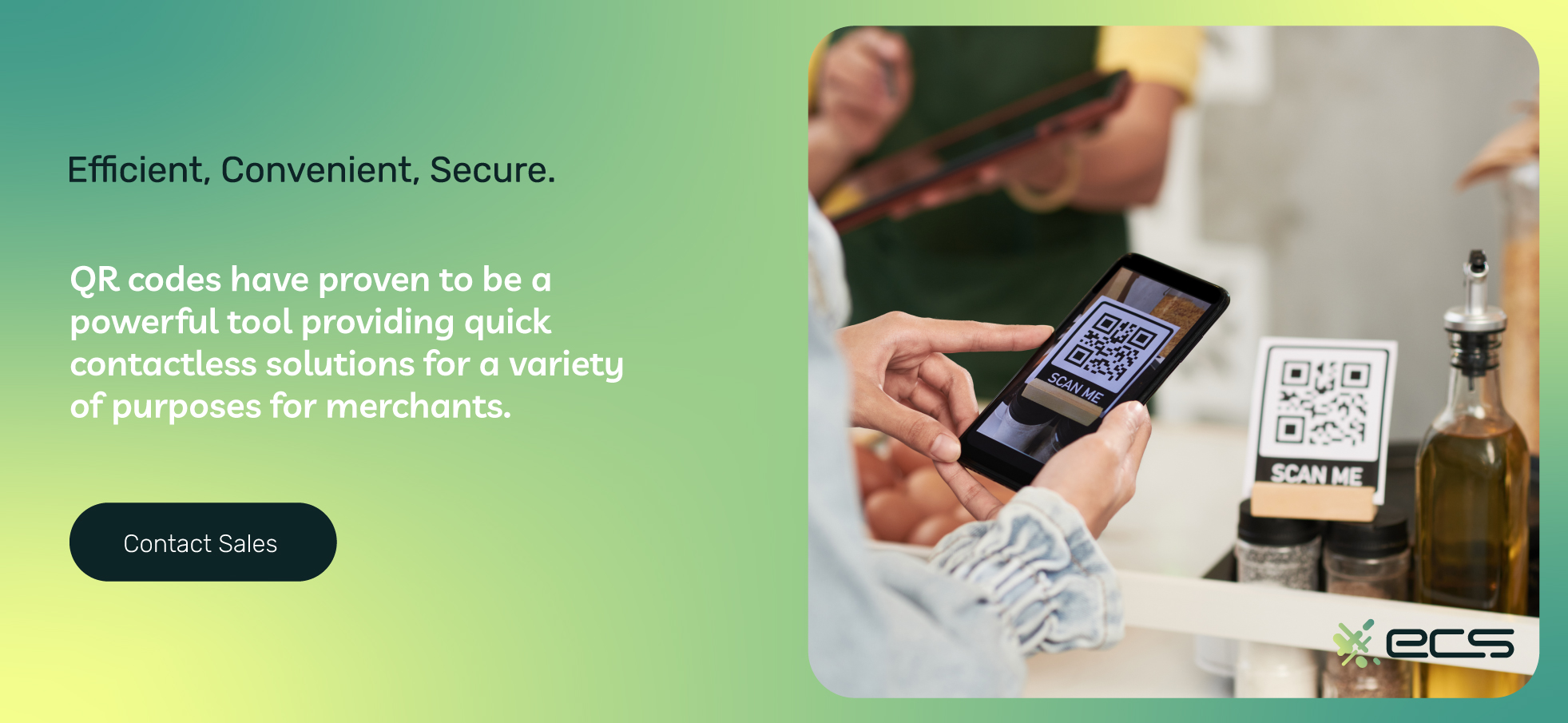
Smartphone Camera QR Scanning is Born
The original attempt at these codes had ultimately failed, and they had pretty much dissipated. However, QR codes had a revolutionary comeback in 2017 due to Apple’s latest iOS 11 update, and soon after Android followed, granting capabilities that allowed all up-to-date devices to scan QR codes with their smartphone cameras, rather than needing to download any additional applications.
This new upgrade helped QR codes to regain traction with smartphone users. However, most were still unaware this capability even existed, as marketing was not successful enough to help users understand how convenient and powerful QR code usage can be. As a result, their full potential had not yet been realized.
The Third Wave: The Need for Contactless Payments Drives QR Code Dependency
A decade later, after the original mainstream QR code launch, the notorious Coronavirus enveloped the world. In 2020, the public faced widespread fears of close contact and the spread of contagious diseases. Social distancing and lockdowns created a society that demanded contactless shopping and point of sale.
Fortunately, QR codes were the perfect solution that had already been developed years prior. In what seemed to be overnight, QR codes were being utilized everywhere, in every industry, and for many purposes. They had exploded once again into society.
Covid’s Mighty Role in QR Codes’ Up Trend
With the new built-in QR code scanning capabilities of today’s smart devices, these codes offer the ultimate touch-free experience for today’s consumer’s needs in a world driven by pandemic protocols. Today’s consumers are all about easy and convenient experiences. This easy-to-use technology provides the best all-around solution for a safe and favorable consumer experience.
With the media wreaking havoc on societal fears, customers became fearful of any contact with any surface that someone else may have touched. Rendering payment terminals, menus, or physical marketing materials is seemingly useless. The momentum QR use has gained will most likely outlive the driver itself, the Covid-19 pandemic.
A survey done in 2020 indicated that nearly half of the population was scanning QR codes on a weekly basis. This was a massive difference from a study in 2014, where only a quarter of the surveyed had scanned a QR code in 3 months’ time.
After its initial deflation, the QR Code’s rebirth has rampantly become a champion for providing opportune solutions for consumers and businesses alike.
How QR Codes are Being Utilized
As QR Codes were revived back to life in 2020, their touch-free solution benefited a multitude of industries in offering adaptability and versatility even in the given circumstances; facilitating a maintained establishment and even growth during trying times.
Mobile Applications
QR codes for payment apps and social media have been added to applications like Venmo, Cash App, Paypal, Instagram, Snapchat, and TikTok to send or receive money, or to add a person’s profile to a user’s contacts.
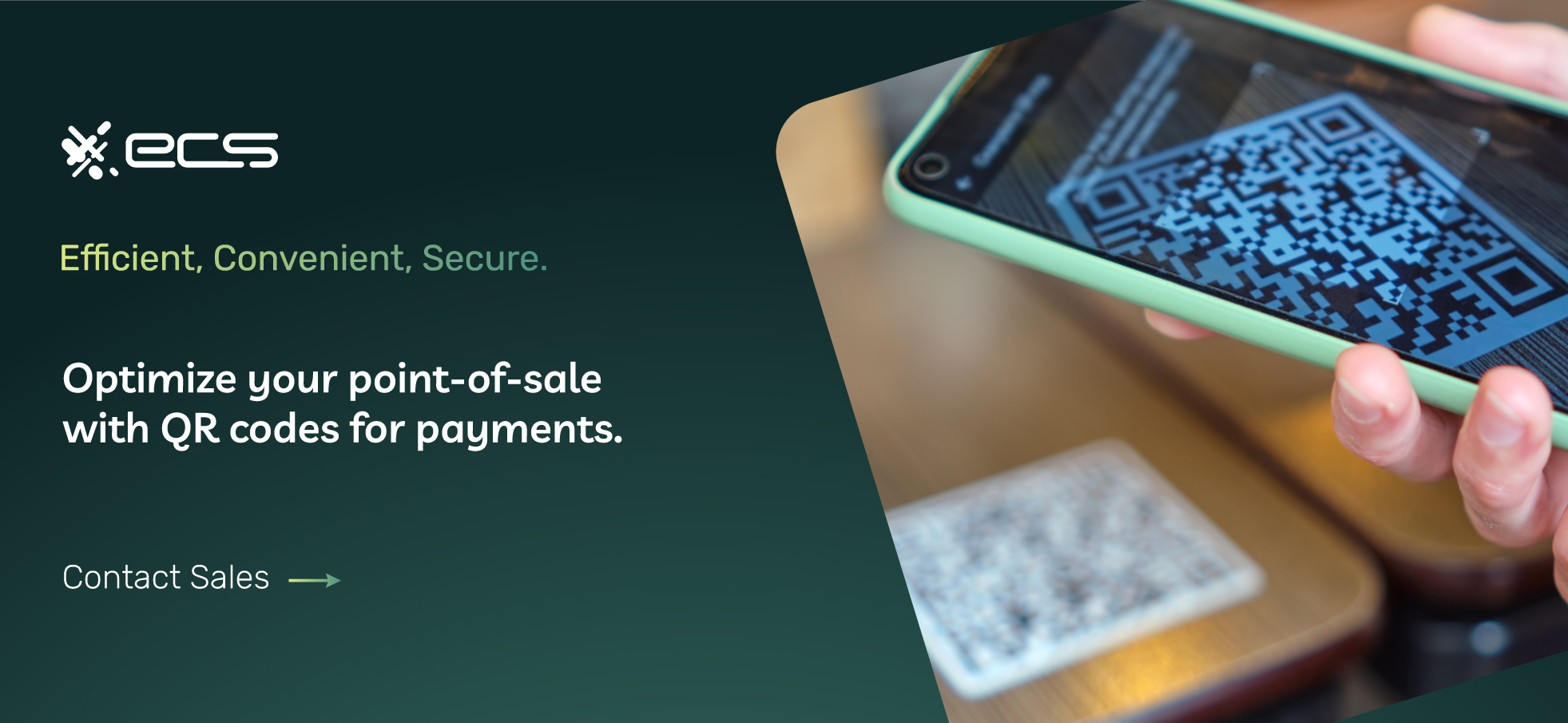
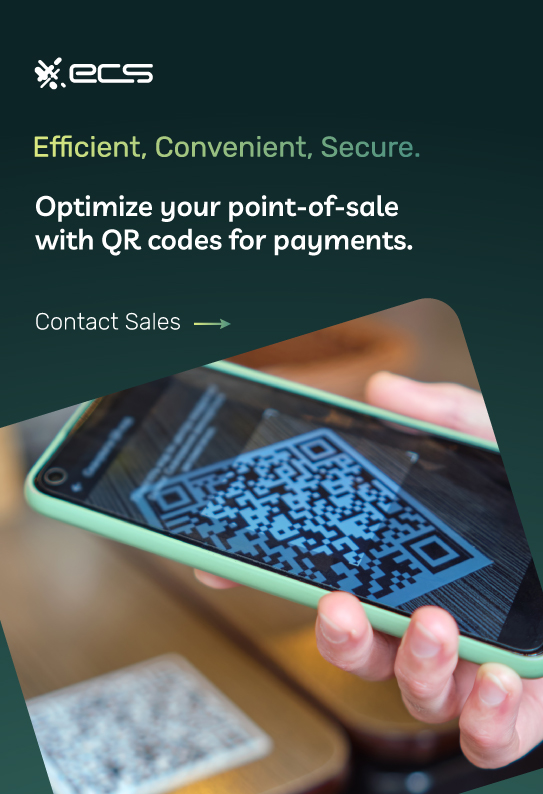
Health and Medical Services
Contactless encounters are ever-so-important, especially in medical industry trends. Contactless check-in and medical form completion are being done easier and safer than ever with the implementation of QR technology.
Travel, Entertainment, And Recreation
Airports, train stations, movie theaters, concert halls, sports arenas, convention centers, zoos, museums, and theme parks, are all adopting QR technology to replace physical tickets and boarding pass. This technology is also being used for informational purposes where visitors can scan the code and learn more data or history about the item, animal, or material on display.
Retail
Second to restaurants, the clothing industry has become the largest sector to adapt to the times by way of QR technology. Retail stores are now offering contactless payments and returns without a cashier by way of QR codes. These codes are also used throughout shops to provide more information on products by directing consumers to web pages.
Food and Beverage Industry
In order to keep customers and employees safe, bars, clubs, and restaurants have taken full advantage of QR technology. Reusable and one-time paper-use menus have become a thing of the past. QR codes are now displayed on tables for customers to scan with their phones and view the menu from their own devices. Some businesses have taken the contactless and social distancing practices a step further and now allow guests to order, customize their choices, and pay when they are ready all on their smartphones.
QR technology has created a quick and easy dining process for today’s restaurants. Now, restaurants can stop holding their customer’s hostage while they wait for the bill. Guests can now appropriately “dine ‘n dash”. This used to be a scary liability for restaurant owners as dine ‘n dash, typically refers to shady customers ordering, eating, and leaving before the server comes back with the bill.
Although such behavior is typically rare and reserved for rowdy teenagers or societal delinquents, the truth of the matter is, that no one likes to wait to pay and get on with their day if servers or waitstaff take too long, or are not vigilant in bringing the bill. This gives customers the unwanted perception of being held hostage and the feeling that the business does not value their time.
Clover QR Code Payment Solutions
Clover, a very popular POS system used in the restaurant industry has now adopted its own application that takes advantage of QR technology to assist in healthy and safe restaurant protocols.
With Clover Dining’s Scan to Pay feature, the terminal will print the bill with a QR code at the bottom, customers can scan the code with the camera on their iPhone and directly pay with Apple Pay, where a user’s credit card and payment information is already stored. A payment notification will be received on the Clover device, and the customer can leave without waiting and the waitstaff is free to serve other tables.
Marketing
QR codes are shining brighter than ever with the new revelation of their advantageous features. These codes can also be used in marketing strategies. Contactless convenience generates the ideal benefits in today’s and the future’s society.
QR codes are expected to be leading marketing solutions for years to come. Here are 4 advanced ways marketing has taken advantage of this technology:
- Directing new traffic to resumes, LinkedIn profiles, or work portfolios using a code on a business card or printed media to peak interest and new opportunities.
- Directing customers to a website using a code on a business card or printed media provides customers with more information that may not have seamlessly fit in a printed advertisement.
- Providing discount codes or coupons without the need to print a massive amount of cut-out coupons. Offering a coupon for an in-store or online purchase will attract more customers to buy a product or service. A study by Socratic Technologies discovered that 18% of Gen X and a quarter of Millennials would prefer to scan a QR Code to redeem an offer.
- Increasing social media followers on Instagram, Facebook, Twitter, and TikTok by printing a code anywhere. This allows social media users to easily find your account without having to navigate similar users in the search bar.
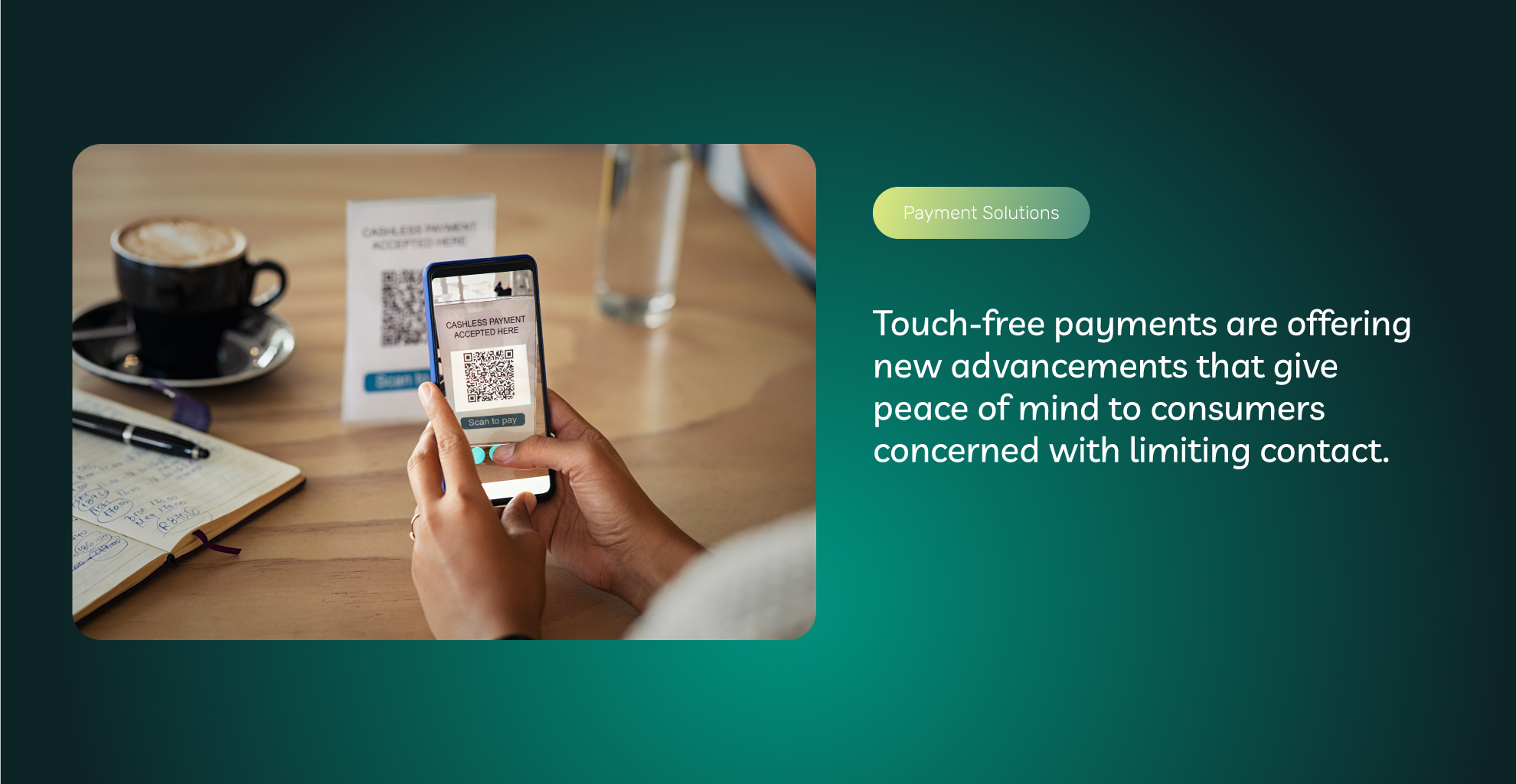
QR Codes Are Fostering Consumer and Social Media Engagement
Beyond their immediate applications in contactless payments and access to information, QR codes have become pivotal in increasing consumer and social media engagement beyond a Pandemic-driven society’s needs.
So, how do QR codes help with social media? To start, QR codes can only access links through a smartphone. And what is already loaded onto the first page of nearly every phone? That’s right, the user’s social media apps.
To easily get more online and social traffic to a business’s social pages, such as Instagram, Facebook, Twitter, and TikTok, merchants have begun printing QR codes and placing them in easily accessible and heavily trafficked locations.
Users can easily scan the QR codes and immediately be directed to the social media page, rather than looking up the business’s account by typing in the navigation bar and then scrolling through similar usernames until they find the right one. Quicker access to a page may result in easier follows, more likes, comments, shares, and, of course, brand awareness.
But why would users want to find a business’s social media account? Well, this is where marketing comes in. To incentivize social media engagement, businesses could use marketing strategies such as:
- Check-in at our location on Facebook to get 15% off your next order
- Follow us on Instagram to get a free drink with your next purchase
- Like, share, and comment on our most recent post to get 50% off $25 or more
- Etc.
Really, any type of promotion or freebie is a great incentive for a simple check-in, follow, like, comment, or share. But one thing to be cautious of is that users could always follow your account for the freebie and then unfollow after they’ve received it.
So, to keep customers engaged, be sure to post exciting and relevant content, aesthetically pleasing designs, and exclusive savings and promotions that only your followers would have access to.
Quick Response Benefits for Everyone
QR codes have created priceless benefits for everyone. With this inexpensive and on many occasions free-to-use technology, manual labor is reduced, and time is saved. This cuts staffing costs, and generates more guest turnover throughout the day, creating more revenue and a better customer experience.
Are there Disadvantages to QR Code Technology?
QR codes are free, easy to use, and convenient. However, if we dig a little, we can find a couple disadvantages to this unique technology.
One of the most obvious disadvantages with QR technology rings true for any advancements in tech. It can be difficult to navigate for older generations. Many baby boomers and beyond may see these crazy looking squares and scratch their heads. But with simple instructions, they can become easily learned.
Additionally, QR security may be a concern for some. In January of this year, the FBI warned the public of possible cyber criminal activity surrounding QR codes. Some codes can be tampered with leading users to a malicious website. This redirect is aimed at stealing user’s data by embedding malware into the smartphone used to navigate to the site. These instances are rare however, and should not detour against the adaptation of this unique technology.

How Can I Create a QR Code?
Making your own QR code is easy! There are 7 simple steps to complete this process.
- Create a designated website that you’d like to direct users to
- Select any QR code generator website (Hint: Google QR code generator and plenty of results will be displayed) or an application on your smartphone.
- Enter your desired URL
- The QR code will generate
- Design your QR code look
- Click “download” (Note: you can select .jpeg format or .svg (vector) format.
- Use your QR code for free
Quick Recap – A Different Type of “QR”
As we are approaching the three-year mark of the COVID pandemic, it has become innate to the public to scan QR codes throughout the day. These new payment methods are revolutionizing our consumer world. With mobile becoming increasingly popular, the QR code has generated a new world in which these payment options can be utilized. Touch-free payments are offering new advancements that give peace of mind to consumers concerned with limiting contact.
In 2010, the QR code gained mainstream popularity with the ease of smartphone technology. Yet a few years later, roughly after 2013, the fad of the QR code had fallen out of touch with the public as NFC technology was favored. Almost a decade later, QR codes bounced back, bigger than ever. As QR Codes continue to reveal their powerful value, It is likely that they will remain around for the long haul with momentum likely to outlast the pandemic.
To contact sales, click HERE. And to learn more about ECS QR Codes visit Contactless & Mobile Payments.
Updated January 2024
